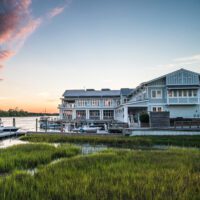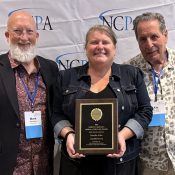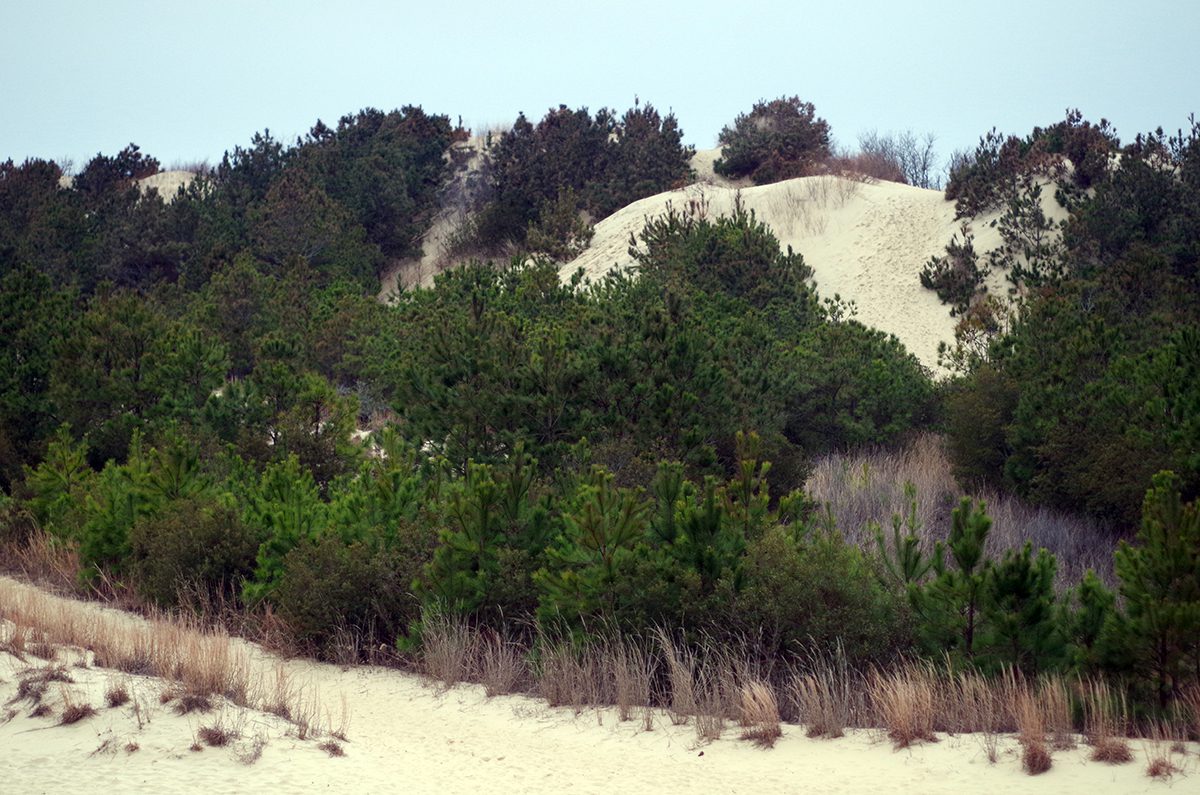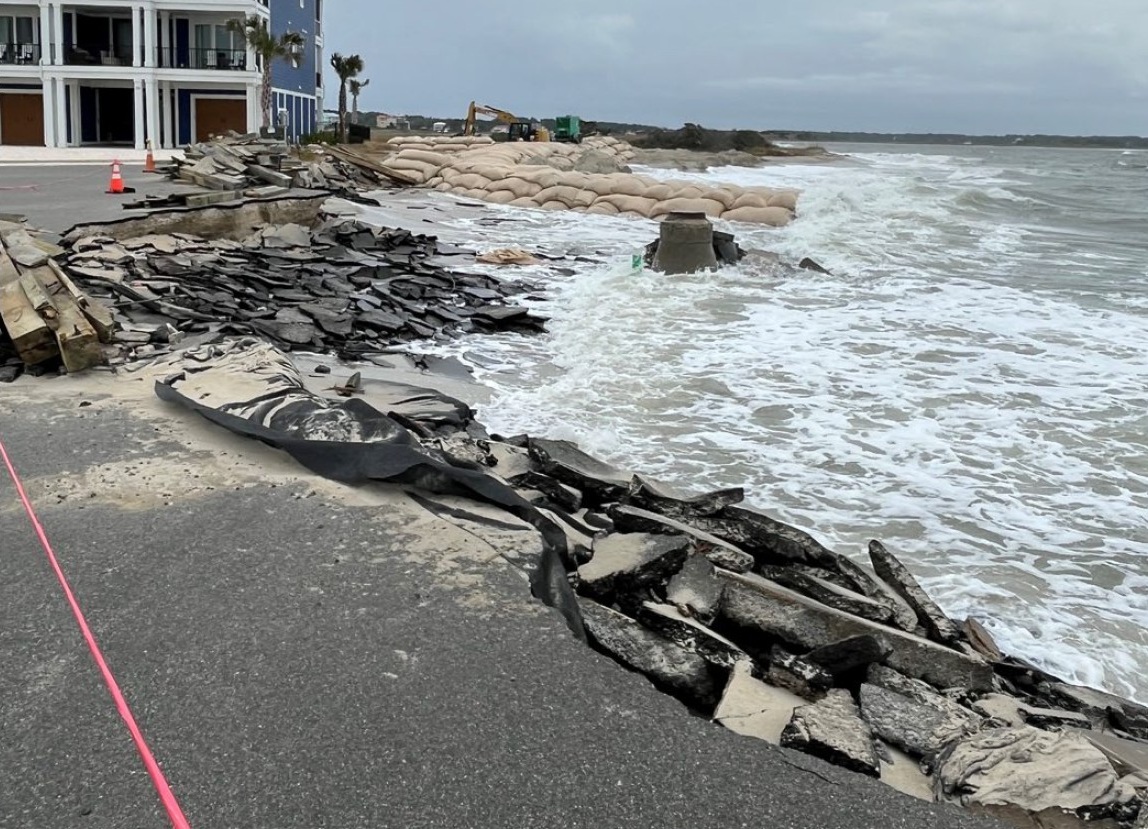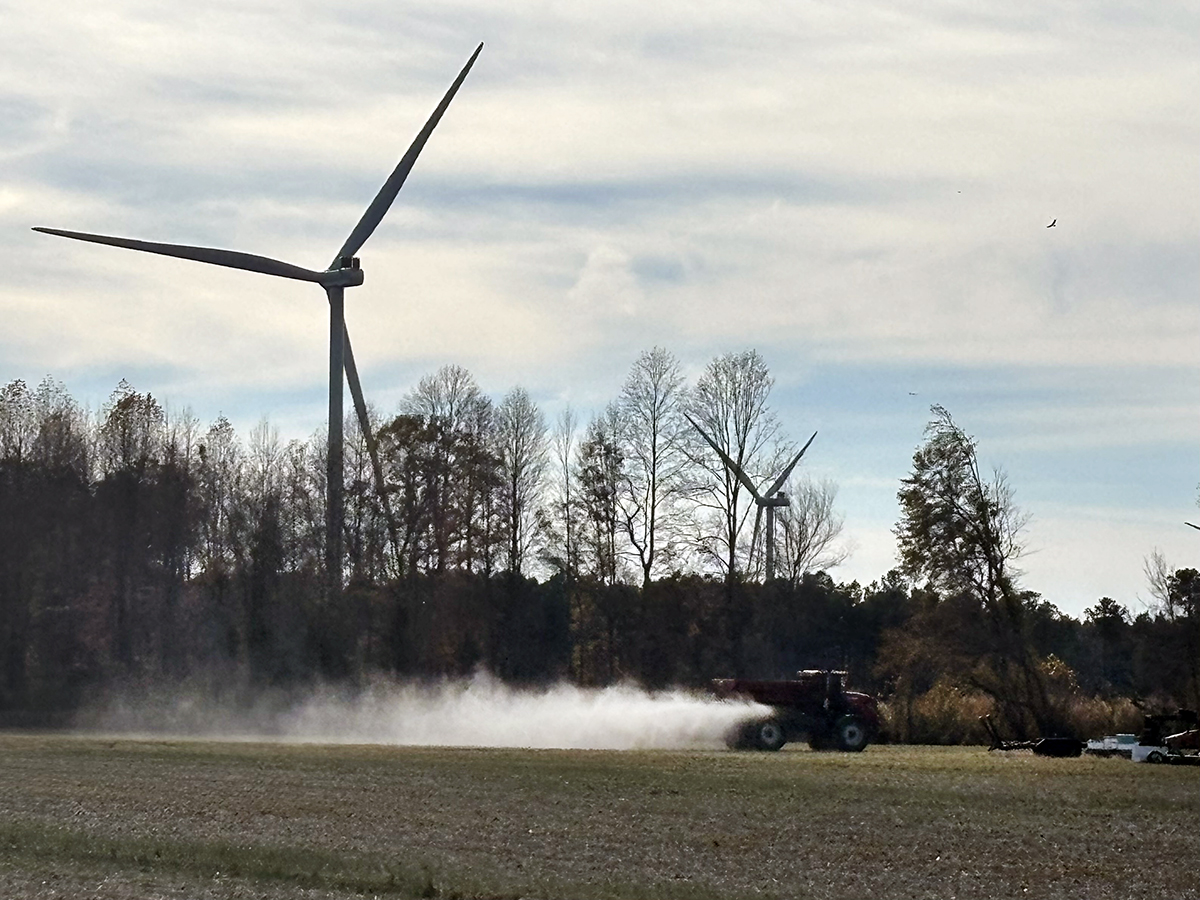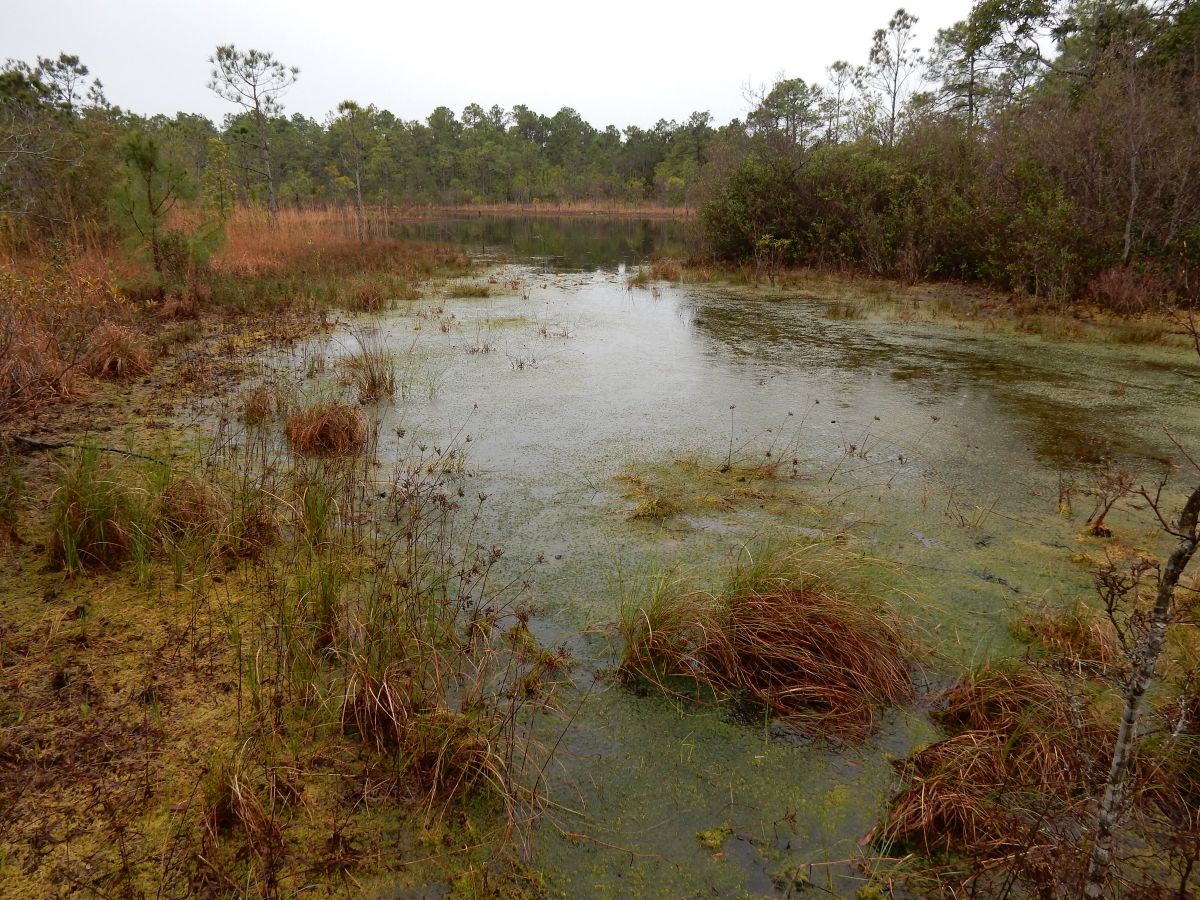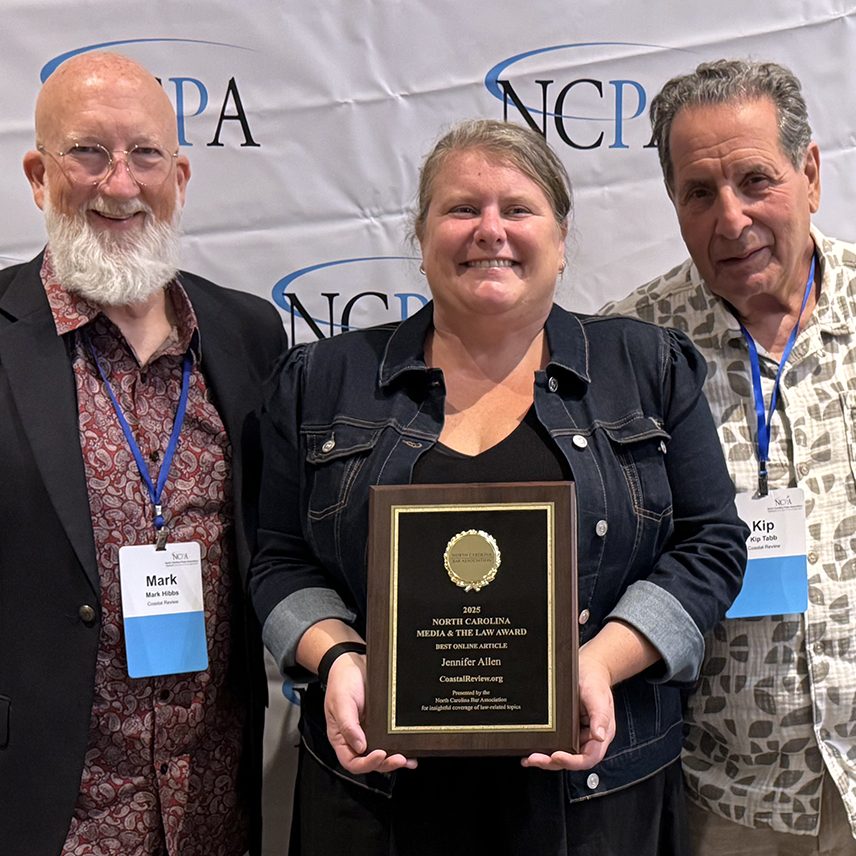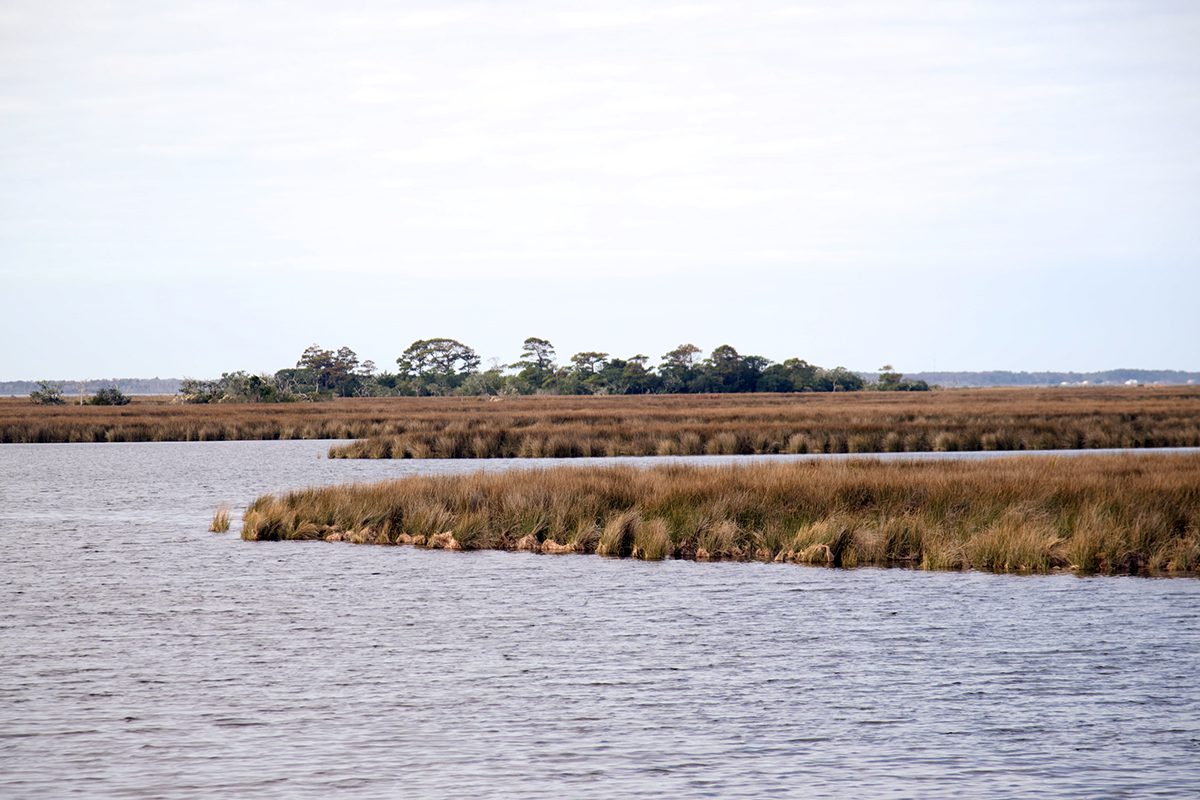
COROLLA — Officials with the Donal C. O’Brien Sanctuary and Audubon Center at Pine Island hope to add to their toolkit for mitigating the effects of sea level rise on marsh environments with help from a recent $3.05 million grant.
The National Fish and Wildlife Foundation awarded the money to the sanctuary in Currituck County in late 2024, “to fund innovative marsh restoration pilot projects.”
Supporter Spotlight
Marsh islands that once protected Currituck Sound shorelines along the Outer Banks and in mainland Currituck County are disappearing. The marsh itself is retreating, and slowly, incrementally, Currituck Banks are becoming narrower.
The marsh, in order to grow as water levels change, needs a steady supply of sediment, but the main source of that supply has been choked off by efforts to control ocean beach erosion.
“By fixing the (Outer Banks) in position, we are limiting these over water dynamics,” Dr. Sid Narayan, assistant professor in the East Carolina University Department of Coastal Studies, told Coastal Review recently. There is still sediment that comes from rivers, but, he explained, “that’s more limited.”
Pine Island Audubon Center Director Robbie Fearn has spent more than 10 years on Currituck Sound, and he has seen the effects Narayan described.
“You don’t get the overwash anymore,” Fearn said. “A lot of what we’re struggling with out here is that we don’t have much sand. It used to be, with barrier islands all being barren, the sand would just blow in. Now it doesn’t blow in, so there’s no sand source from here, either overwash or blown sand. It’s a real challenge.”
Supporter Spotlight
Narayan said the situation is not hopeless, but it does require new ways of thinking. Fearn agreed.
“I think what we need to get creative with is to find ways in which we can start to introduce as much of these ocean-to-sound dynamics as possible,” Fearn said, retrieving a U.S. Geological Survey map from a drawer, spreading it across a table and pointing to a series of small islands of the Currituck Sound marsh called Shoe Hole Bay.
“All of this area out here is falling apart. It’s not much of a bay anymore,” Fearn said. “Once we lose those, then all of this inner marsh complex gets exposed to that high fetch, and this is where the marsh birds like to nest, in protected high marsh.”
Fearn then moved his finger across the map, pointing to an island opposite from Shoe Hole Bay that forms the eastern boundary of Poplar Branch Bay and the community of Walnut Island that borders it.
“This island, Marsh Island, actually protects all of Walnut Island from storm surge,” Fearn said, noting that on the north end of the island the waters of Currituck Sound are “trying to break through.”
‘Years of hard work’
The National Fish and Wildlife Foundation, or NFWF, is a nonprofit conservation organization that Congress created in 1984. A 30-member board of directors approved by the Secretary of the Interior governs the private organization.
The NFWF grant is the latest in a series of grants awarded to the Pine Island site for restoration. In 2019, the North Carolina Attorney General’s office awarded an Environmental Enhancement Grant to the Audubon Society that created the framework for the NFWF grant.
“This is the culmination of many years of hard work and partnership across many different organizations and engineering firms and researchers,” said National Audubon Society Senior Coastal Resilience Program Manager Cat Bowler.
Those organizations will be invaluable in moving a project forward that will look to new ways to approach restoring the marsh.
“These projects are some of the first of their kind in Currituck Sound and in some cases, in the state of North Carolina. We want to do everything that we can to learn as much as we can about these marsh restoration techniques so that we can share what works well and what doesn’t work well,” Bowler said.
One of the issues confronting marsh restoration in Currituck Sound is that it is an environment unlike almost any other. Techniques that may have been successful in the Pamlico or Albemarle sounds often will not work at Pine Island.
“The majority of these coastal restoration projects, particularly in North Carolina, have been done in saltier-water environments, so they tend to depend heavily on oyster reefs and that sort of thing. In this very low-salt environment (at Pine Island), nobody really knows what works,” Fearn said.
The grant calls for Audubon to test and evaluate three different approaches. Two of the methods that will be tested are deemed low-tech and inexpensive. For Fearn, that is particularly important. He said that, although the testing will be done at the Pine Island marsh islands, if successful, they could offer less-costly restoration alternatives to surrounding areas.
“We really wanted to pilot some techniques that perhaps a farmer could use to protect their fields or some other landowner could utilize to protect their property that was not at that high price point of a living shoreline,” he said. “If you’re putting in rock or you’re putting in those vinyl breakwaters, the vinyl breakwaters are probably $125 to $250 a linear foot (to build). Well, if you got a lot of shoreline, you’re talking $100,000.”
The two less expensive systems that are being used are, according to information from Audubon, “coir logs, which are made of woven, biodegradable material and are placed on bare mud in front of a marsh to help dampen the force of waves,” and “pine tree breakwater(s) will be created by laying recycled trees between pilings in front of marsh islands.”
The coir logs are a coconut fiber log, and if the technique works, could be a simple method to rebuild the marsh in the right circumstances.
“We are looking at things like the coconut fiber log, because that can be installed, once you have the permit, by anybody,” Fearn said.
The pine tree breakwaters are a more complex installation, but still relatively low cost, especially compared to a living shoreline.
“The Christmas tree breakwater is a little more advanced, but once again, it’s low-tech installation,” Fearn said, explaining that after pilings are in place, “you place the Christmas trees.”
But, he added, there is research that has to be done.
“Does having that much pine in one area create a change in the water chemistry in that area?” was a question Fearn posed.
Perhaps the most ambitious — and expensive — method funded is thin-layer placement.
Thin-layer placement is a “novel technique,” Bowler said, “which has been used successfully in other coastal states, but is still very new in North Carolina.”
Audubon describes the technique as applying dredged sediment in thin layers on the marsh surface. This has been successful in Louisiana and other coastal states, but has not been tested at scale in North Carolina. The process, which requires dredging silt and placing it in the marsh environment, is significantly more expensive and requires far more technical expertise than either coir logs or pine tree breakwaters.
Marsh Island, where it borders Walnut Island and Poplar Branch Bay, was identified as the site to test the thin-layer component. When first conceived, planners looked at Oregon Inlet as a source for silt, but “it was just terrible for the ecology and the cost for moving all that sand up here was ridiculous,” Fearn said.
Instead, the dredging will happen at two locations much closer to the marsh and will have added benefits, Fearn explained.
“We wanted to have community benefits as well. We’re in a place with lots of channels, (and) we found just north of the Poplar Branch boat ramp is a shoal area. In fact, they’ve got markers to warn people,” he said. “If we can lower these shoals, we have a navigational benefit and the Walnut Island community has these channels that are silting in cleared.”
The grant project is still in its initial stages. Permits are still needed and it may take longer than usual because of the experimental nature and because regulators and Audubon want to be sure it is be done correctly.
“The regulators are very much interested in these projects, because they are groundbreaking in many ways, and we need as many tools in the toolbox as we can get to address these changes that are happening to our coast,” Fearn said.
“We’re very much committed to working in partnership with the regulatory community to make sure that we get these projects right, and that we learn as much as we can from these pilot techniques,” Bowler added. “We are planning to have those permits in hand by summer. That’s our goal.”

